
Alien: Covenant
Framestore once again voyaged into space to team up with Ridley Scott on Alien: Covenant. Having wound back the clock on the Alien universe in 2012's Prometheus, Scott continues the story with Covenant, featuring over 295 shots of futuristic VFX work by the Framestore team. Framestore looked after the build of the Covenant ship, it’s environment, as well as tackling cult horror creatures; the ‘Facehugger’ and the ‘Chestburster.’
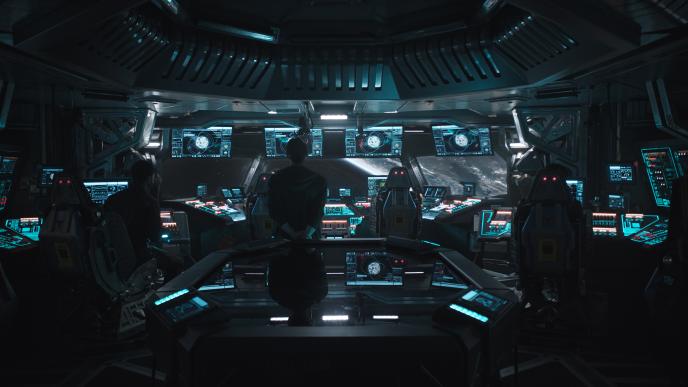
It was an honour to work on this film, a dream come true! Many of our artists were huge fans; they were queuing at the door to work on it.
The Covenant
The crew embark upon their mission onboard the Covenant ship, assembled by Framestore’s Montréal team using individual pieces fixed together at rendering stage. ‘It was about 1,000 meters long,’ explains Christian Kaestner, VFX Supervisor. ‘We needed something that would hold up in close-ups as well as wide shots without challenging our render times too much.’ The team was given a fairly specific brief including concepts from Steve Burg, who designed and concepted the ship with Scott; blueprints; 3D models and on-set references of models that were built for the filming. ‘Anyone who has ever worked with Ridley Scott knows how much detail he likes to put into his practical set,’ adds Kaestner. ‘All of this was obviously great reference for us to build and get the spaceship onto the big screen.’
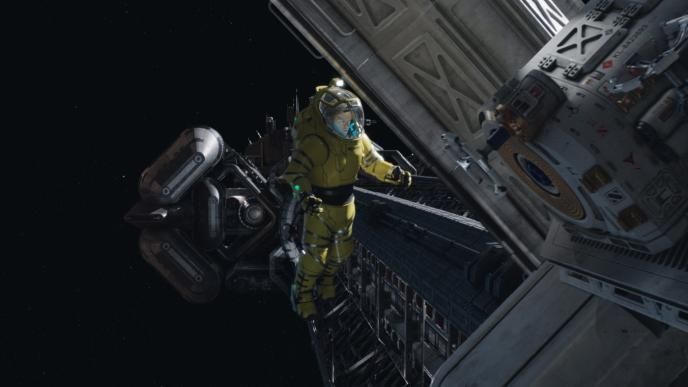
Running low on power, the Covenant deploys ten million square feet of energy sails. Framestore undertook technical R&D to determine how the flimsy material would act in zero gravity and used deep-space lighting to get across the scale of the sails. ‘Lighting in deep space is always challenging; in this instance we were not able to use bounce light from Earth or any other planets. We had to create lighting that would work for the shot without looking out of context’, explains Kaestner. The team manually placed individual stars to brighten the space and to allow for slight colour variations and pings on the sail surface. ‘Broader fill light would make the sail look like a cloth or plastic material,’ adds Christian.
A cosmic ‘shockwave’ impacts the Covenant. The artists used a distortion effect that echoes the way that light warps around black holes. Crossing the starfield, the shockwave reveals a spectrum of colour. ‘Our stars have very intense colour values’ explains Kaestner. ‘They only appear white because they’re really bright, but when we moved the camera it would bring out the colour.’
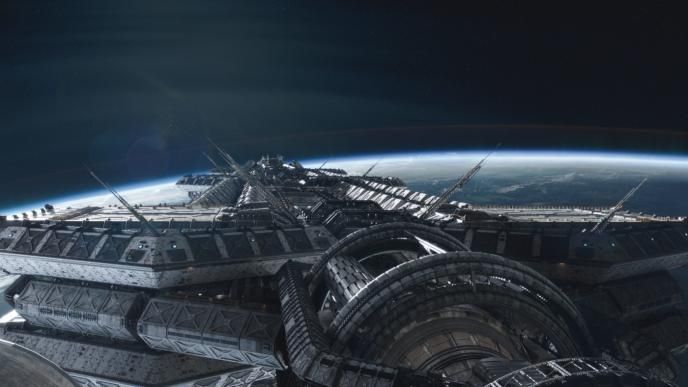
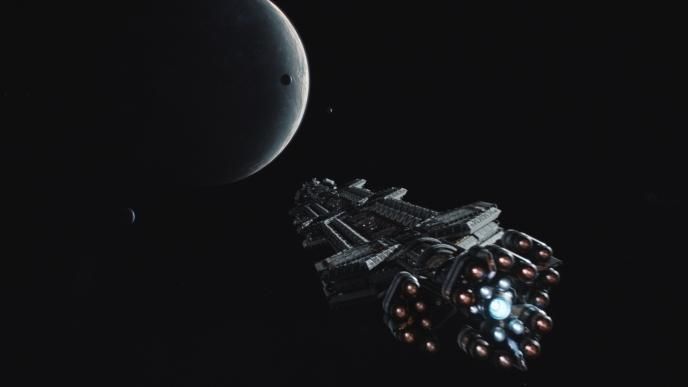

Getting to work on Covenant was the opportunity to contribute towards a classic franchise that had been touched by so many of the great filmmakers.
The Facehugger
Framestore was delighted to work on the Facehugger, the iconic cult creature as featured in Scott’s original film. Keeping the feel of the treasured original, it was a process of tweaking an update within keyframe animation. ‘It has more leg joints than the original, and the ends of the legs have been re-designed,’ explains Stuart Penn, VFX Supervisor. ‘We used a lot of reference from the original films, just to make sure that we were on track.’
A prop had already been shot on set, giving great lighting reference for the team tasked with replacing the creature. Building a model based on the puppet, they were able to sculpt additional detail into the surface using ZBrush, also building an internal skeleton, muscles and ligaments to aid the proprietary flesh simulation, which included the ability to make its egg sack pulsate in a disturbing way. Framestore’s hair system was used to ‘groom’ dirt over the Facehugger’s surface.
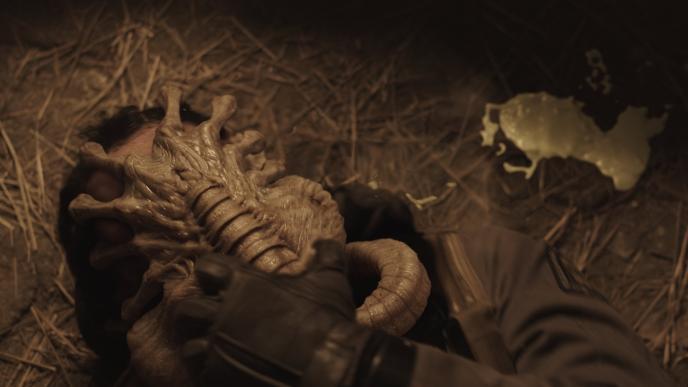
The team produced some early animation tests to determine how the creature should move. After playing around with some walk cycles based on spider-like movements, it became clear that any set cycle was too clean and methodical. ‘Ridley was after something more visceral, instinctive and chaotic’, explains Penn. ‘We wanted to make the movement quite random and dirty, and most importantly, scary.’
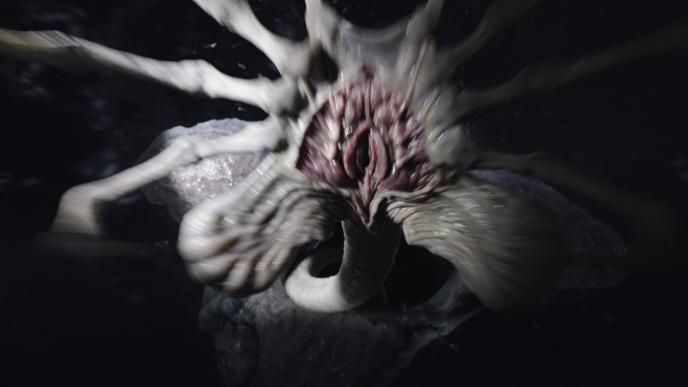
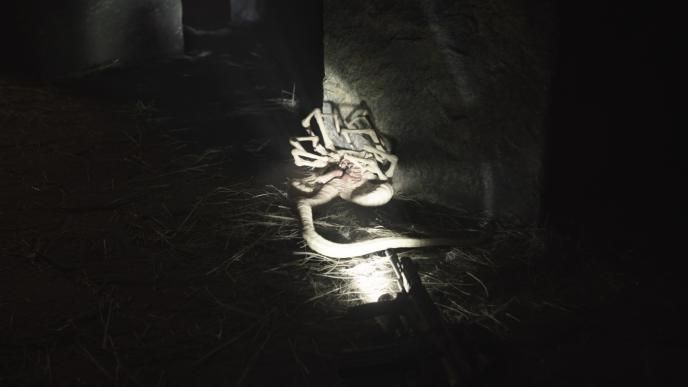
The Chestburster
Another creature revisited in the film is the iconic Chestburster. ‘Everyone on the show wanted to work on the Chestburster. It carries great magnitude, and is synonymous with the names Alien and Ridley Scott’, adds Kaestner. Based on a sketch by Ridley and an articulated maquette by Odd Studio, the final version of the Chestburster was created by Framestore's Montréal studio. Animation Supervisor Spencer Cook helped to guide the team to create a fresh new take on Alien’s iconic chest bursting.
Dubbed ‘Chester’ by Lead Animator Thierry Dezarmenien, the creature displays a different species of alien behaviour than the worm-like original in the first Alien movie. ‘Even though it is a fully formed biped with two arms and two legs, Ridley's direction was to keep the shape mysterious, and only reveal its true form at the end of the sequence’, explains Cook.
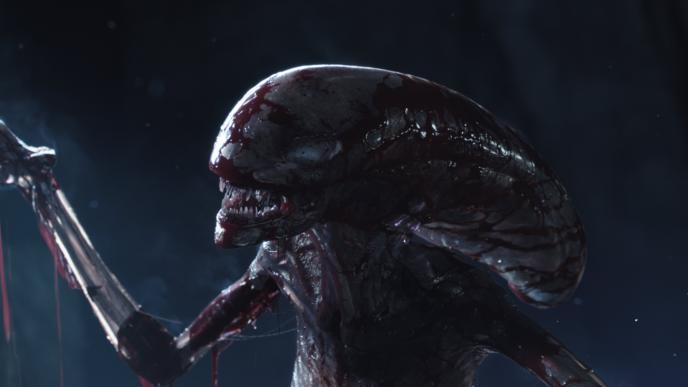
The animation team referenced insect larva and reptiles hatching from eggs to enhance the violent and painful alien birth process. Unlike most digital creations, translucent skin was modelled and textured to reveal intricate layers of muscle, bone and organs. The complex animation rig allowed the limbs to bend backwards and bones to detach, allowing the animators to twist and deform the anatomy into inhuman poses. A host of meticulous fluid, muscle and cloth simulations added multiple layers of gruesome detail to the final animation.

The work we produced in the amount of time we had is incredible and I am so very proud of the effort and love that went into it.
Framestore’s work also encompassed the Hall of Heads environment and digi-double face replacements throughout the film.

Press
Alien: Covenant - VFX Supervisors Interview - Art of VFX
Alien: Covenant; By Land and Air - FX Guide
Framestore completes 295 VFX shots for Alien: Covenant - Post Magazine


